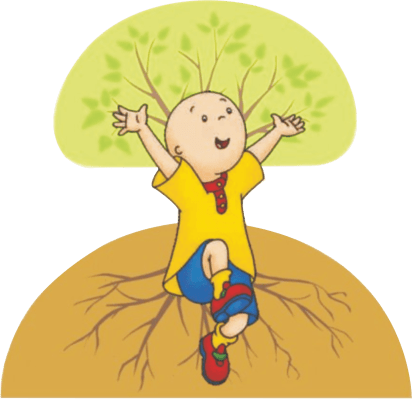Absence Epilepsy
Both childhood absence epilepsy and juvenile absence epilepsy are associated with typical absence seizures except that juvenile absence epilepsy usually starts after 10 years age and has less frequent absences .
These syndromes may cause other types of seizures as well.
Childhood absence epilepsy begins at the age of five or six and usually goes away once the child is an adult. Juvenile absence epilepsy starts when the child is around 12 years old, and may continue for the rest of the child’s life.
What are other terms for absence epilepsy?
Absence seizure disorder
Akinetic petit mal
Minor epilepsy
Petit mal epilepsy
Pykno-epilepsy
Pyknolepsy
Pyknoleptic petit mal
True petit mal
What causes absence epilepsy?
Both childhood and juvenile absence epilepsy are idiopathic generalized epilepsy syndromes. The child’s brain will appear normal on imaging (MRI or CT scan) but he may in fact have very small changes in the brain at the cellular level.
There is a strong genetic component to childhood absence epilepsy. It has not been tied to a single gene. There is probably more than one gene that causes childhood absence epilepsy, and other factors probably play a role as well.
Although we know less about it, genetic factors are also important in juvenile absence epilepsy. It may share some genetic factors with juvenile myoclonic epilepsy.
What are the features of childhood absence epilepsy?
Childhood absence epilepsy usually begins when the child is between four and eight years old, with a peak age of onset at five or six years. It is unusual for childhood absence epilepsy to begin after age 11. About 10% of children with childhood absence epilepsy had febrile seizures at some point.
The child has clusters of absence seizures. He may have dozens or even hundreds of seizures per day. Because absence seizures are often confused with daydreaming, he and his parents may not notice them right away.
It is rare for children to have other seizure types at first, but about 40% of children with childhood absence epilepsy develop tonic-clonic seizures as well. These often begin near puberty, but can begin earlier or later. Myoclonic seizures are usually not seen, although some children may have twitching or jerking movements with their absence seizures.
About 10% to 15% of children with childhood absence epilepsy will have one or more episodes of absence status epilepticus.
Most children have normal intelligence and a normal neurological exam, but between 5% and 24% may have some abnormalities
What are the features of juvenile absence epilepsy?
We know less about juvenile absence epilepsy than about childhood absence epilepsy. If a child starts having absence seizures at age 10 or 11, it may be difficult to tell whether he has childhood or juvenile absence epilepsy.
Children with juvenile absence epilepsy begin having absence seizures near or after puberty, usually between the ages of 10 and 17, with a peak age of onset at around 12 years old. They usually have normal intelligence. They have no abnormalities on their neurological exam that might suggest a focal brain problem.
Children with juvenile absence epilepsy have fewer seizures than in childhood absence epilepsy. They may also have other types of seizures:
About 80% of children with juvenile absence epilepsy also have tonic-clonic seizures (whole body jerking). These may begin later than the absence seizures.
About 15% of children with juvenile absence epilepsy also have myoclonic seizures (Electric shock like episodes), although they do not happen very often and may not be very obvious.
Absence status epilepticus is also fairly common in children with juvenile absence epilepsy.
How many other children have absence epilepsy?
Between 2% and 8% of children with epilepsy have absence epilepsy. Usually, slightly more girls than boys have absence epilepsy.
How do you know that a child has absence epilepsy?
Absence epilepsy is usually easy to diagnose, although some absence seizures may be confused with complex partial seizures.
- Information from you or your child’s teacher about staring spells or other symptoms of absence seizures
- A typical EEG pattern during the absence seizures
- Typical absence seizures can often be induced in the doctor’s office. The doctor will ask your child to hyperventilate (breathe fast and deeply).
It is usually not necessary to do any neuroimaging studies (CT or MRI) if the child has typical absence seizures.
How is absence epilepsy treated?
Anti-epileptic drugs usually control the seizures in childhood absence epilepsy very well. Any one of several possible drugs can be used, and probably fewer than 5% of cases do not respond to treatment. If a child with childhood absence epilepsy has seizures that cannot be controlled, his doctor may try a combination of two anti-epileptic drugs.
What is the outlook for a child with absence epilepsy?
Childhood absence epilepsy often goes away two to five years after the seizures begin or when the child is a teenager. Some researchers believe that early treatment and good response to anti-epileptic drugs improve the chances that the seizures will go away permanently.
If a child has been free of seizures for at least two or three years, his doctor may try to gradually discontinue his anti-epileptic drugs. The decision to stop medication will depend on the individual child, and on factors such as his EEG, his activities, and whether he wants to start driving. Discontinuing medication should be done gradually and with a doctor’s supervision, since sudden or early withdrawal may trigger seizures.
If the child has tonic-clonic seizures as well as absence seizures, these are less likely to go away. However, they are usually easy to control.
Up to one-third of children with childhood absence epilepsy seem to do poorly in terms of social adjustment. The reasons for this may include the seizures themselves, the underlying cause of the epilepsy, drug reactions, the child’s feelings about having epilepsy, or other people’s attitudes and prejudices. As a result, it is very important that the child, his family, his teachers, and his friends have accurate information about his condition.
Juvenile absence epilepsy
We know less about the long-term outcome of juvenile absence epilepsy than we do about childhood absence epilepsy. The seizures usually respond well to anti-epileptic drugs, but children with this syndrome may need to take medication to control seizures all their lives. As in childhood absence epilepsy, uncontrolled seizures may lead to poorer social and academic outcomes.

